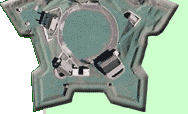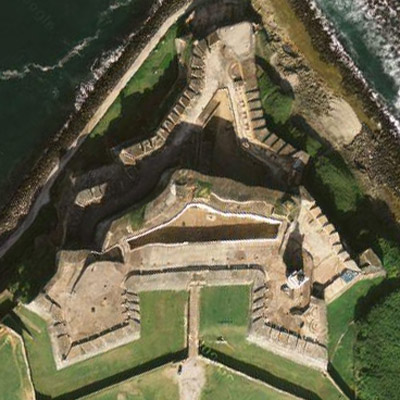
 |
 |
Fort San Felipe del Morro San Juan, Puerto Rico |
 |
 |
 |
 |
 |
||
 |
Spanish King Charles V (1500-1558) orderd the construction of a fort at El Morro (the promintory overlooking the mouth of the bay) in 1539 to protect San Juan, Puerto Rico and control access to its port. A small structure, which comprises about 10% of the fort that is visible today, was finished that year. Starting in 1587, Spanish engineers began adding to and strengthening the fortress, a process that continued for 400 years. El Morro's outer walls were built to a thickness of 18 feet starting in 1680. Including exterior "killing grounds" (ground left open for efficient killing of attackers with cannon), El Morro fills up about 70 acres. British naval wonder Sir Francis Drake (1540-1596) led his fleet in an attack on El Morro in 1595, which was a failure: Spanish gunners shot a ball through his cabin. The British under Sir George Clifford (1558-1605) returned in 1598, successfully attacking San Juan from the landward side, but had to retreat before getting to El Morro due to dysentary (we all know not to drink the water, right?). The Dutch, also attacking from the land, managed to sack and burn San Juan before El Morro's cannon forced them to retire. On May 12 1898, a squadron of twelve US Navy ships traded shots with El Morro and bombarded San Juan. The Spanish-American War (1898) ended with yet another Treaty of Paris (1898). Spain ceded Puerto Rico, Guam and the Philippines to the US. El Morro and several government buildings in old San Juan became part of a huge new US army base, Fort Brooke. El Morro's killing grounds were filled with baseball diamonds, a hospital and a golf course. U! S! A! If one wishes to stretch the boundaries of the US' involvement in the First World War (1914-1918), it can be said that the US fired its first shots of the war from El Morro on March 21, 1915. An armed German supply ship, the Odenwald, tried to muscle its way out of the bay to deliver supplies to Kriegsmarine submarines waiting in the Atlantic, only scuttle back to where it started under fire from the fort. During the Second World War (1939-1945) the US army built a huge concrete bunker atop El Morro to direct fire from coastal artillery and keep watch for German submarines. In 1961 the US army left El Morro, and the fort became property of the National Park Service. In 1992, in celebration of the Quincentennial of Columbus' voyages, the fort's exterior killing grounds were restored to their former lustrous glory be removing trees, paved roads and parking lots. The fort's lighthouse, built by the US from 1906 to 1908, was restored to its original Spanish colonial appearance. El Morro was used by director Steven Spielberg in the 1996 movie Amistad, playing the role of a fort in Sierra Leone in which slave auctions were held in 1839. Today, flags of the USA and Puerto Rico fly over El Morro, as well as the Cross of Burgundy flag, a standard that was used by Spanish armed forces around the world from 1506 to 1785. El Morro receives some two million visitors a year, making it one of Puerto Rico's main tourist attractions. |
 |
 |
||
|
|
|||||||
Info Source 1 Info Source 2 Info Source 3 Info Source 4 Info Source 5 Thanks to Google Maps for the image! ©2010 starforts.com |
 |